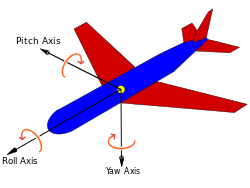Messages
Library messages contains support wrappers for data structures commonly used in robotics. The individual message types allow for standardizing the interfaces between the functional parts of the robot software architecture. The implementation of the library is inspired by the ROS middleware which is commonly used in robotics to manage software architecture of the robots. While the ROS messages are only data wrappers, our implementation features several simplifications and some of the message classes include additional code to simplify work with them.
The messages used in the tasks within the UIR course are inherited from the Message class and are following:
HeaderVector3QuaternionPoseOdometryTwistPathLaserScanOccupancyGridNavGraph
The structure of the individual message classes and the description of their methods follows.
Header
General message header that contains information common for most of the message types
Attributes
timestamp- float - creation timestamp of the messageframe_id- string - string identification of the coordinate reference frame in which the data are represented (default tobase_frame)
Vector3
Message for representation of 3D vectors with $x$,$y$,$z$ components
Attributes
x- float - x coordinatey- float - y coordinatez- float - z coordinate
Quaternion
Message for representation of 3D orientation using unit quaternion. There are multiple ways how to represent the rotations in the robotics, with the rotation matrices and quaternions being superior to Euler angles with their commonly used variant Tait–Bryan angles. The Euler angles is a representation of the robot orientation in 3D using rotations around principal axes of the robot. In particular, the original Euler angles are prescribed by one of the following orders of rotation ($zxz$, $xyx$, $yzy$, $zyz$, $xzx$, $yxy$) with the more common representation using the Tait–Bryan angles variant prescribed by one of the following orders of rotation ($xyz$, $yzx$, $zxy$, $xzy$, $zyx$, $yxz$) commonly referred to as yaw (rotation around $z$ axis), pitch (rotation around $y$ axis), and roll (rotation around $x$ axis) of the robot, similar to the following figure (courtesy of Wikipedia).
There are two principal problems in usage of Euler (Tait–Bryan) angles. First is the missing standardization of rotation order which leaves us with twelve possible sequences of rotations. Second, the Gimball-lock effect which is a loss of Degree of Freedom that occurs when two axes are driven into a parallel configuration by the sequence of the rotations. Hence, representation of the orientation using quaternions and rotation matrices is therefore better considered a better option.
Attributes
x- float - x componenty- float - y componentz- float - z componentw- float - w component
Methods
to_R()- Method to convert quaternion into the rotation matrixfrom_R(R)- Method to convert rotation matrixRinto the quaternion representationto_Euler()- Method to convert quaternion into euler angles (yaw, pitch, roll) - $xyz$ orderfrom_Euler(yaw, pitch, roll)- Method to convert euler ($xyz$ order) anglesyaw,pitch,rollinto the quaternion
Pose
Basic class for representing robot pose in free space in form of $x,y,z$ position vector and orientation quaternion
Attributes
position- Vector3 - position componentorientation- Quaternion - orientation component
Methods
dist(other)- Method to calculate the euclidean distance between self and theotherPoseplot(ax)- Method to 2D plot the pose into thematplotlib.pyplotaxesax
Path
Basic class for representing the robot path in free space
Attributes
poses- Pose[] - list of poses of the robot
Methods
plot(ax, skipstep=0)- 2D plot of the path with an optional skipstep
Odometry
Basic class for representing robot odometry as a timestamped pose in the given reference frame
Attributes
header- Header - timestamp and reference frame id of the Odometry messagepose- Pose - pose of the robot
Twist
Basic class for representing velocity in free space broken into the linear and angular components
Attributes
linear- Vector3 - $(v_x, v_y, v_z)$ components of the linear speedangular- Vector3 - $(\omega_x, \omega_y, \omega_z)$ components of the angular speed
LaserScan
Basic class for representing a single line scan from planar laser scanner
Attributes
header- Header - timestamp and reference frame id of the Odometry messageangle_min- float - start angle of the scan [rad]angle_max- float - end angle of the scan [rad]angle_increment- float - angular distance between measurements [rad]range_min- float - minimum measurable distance [m]range_max- float - maximum measurable distance [m]distances- float[] - distance data [m] (note: distance data out of range should be discarded)
Methods
plot(ax)- Method to 2D plot the LaserScan into thematplotlib.pyplotaxesax
OccupancyGrid
Basic class for representing occupancy grid map
Attributes
header- Header - timestamp and reference frame id of the Odometry messageresolution- float - the map resolution [m/cell]width- float - width of the map [cells]height- float - height of the map [cells]origin- Pose - the origin of the map [m, m, rad]. This is the real-world pose of the cell (0,0) in the map.data- float[] - the map data in row-major order
Methods
plot(ax)- Method to plot the grid map into thematplotlib.pyplotaxesax
NavGraph
Basic class for representing the navigation graph $\mathcal{G}=(V,E)$, where $V$ is a set of vertices and $E$ is a set of edges.
Attributes
poses- Pose[] - list of graph vertices $V$edges- list( (i,j) ) - list of index tuples representing the graph edges $E$
Methods
plot(ax)- Method to plot the grid map into thematplotlib.pyplotaxesax
